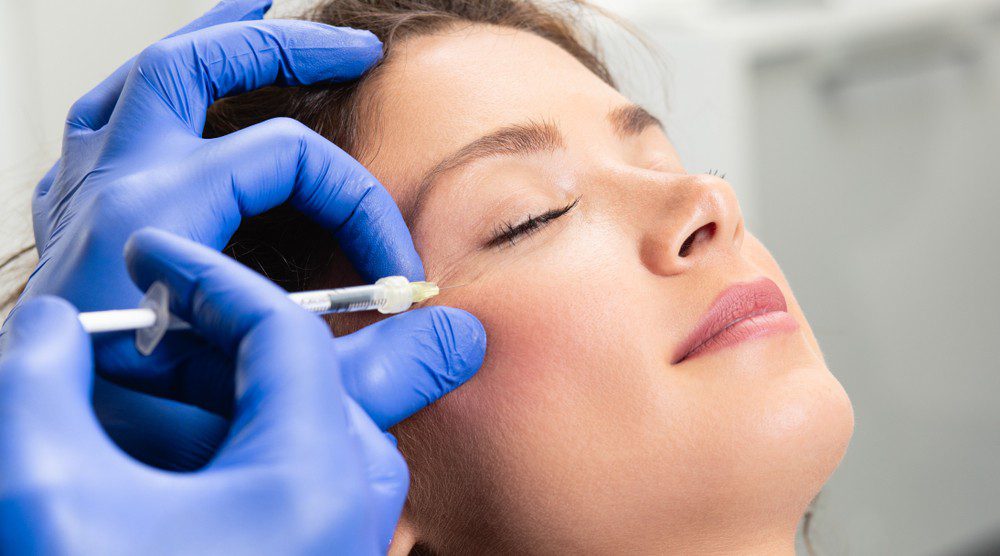How to lose face fat

Several aesthetic procedures can help reduce fat in the face.
Here are some common options:
Lipolysis injection: lipolysis is an FDA-approved injectable treatment for reducing moderate to severe fat under the chin (submental fat).
Radiofrequency (RF) Treatments: RF treatments deliver controlled heat energy to the deeper layers of the skin, stimulating collagen production and promoting tissue tightening. Some RF devices, such as those using bipolar or multipolar RF technology, can also target fat cells, leading to a reduction in facial fat volume over time.
HIFU (High-Intensity Focused Ultrasound): HIFU is a non-invasive procedure that delivers focused ultrasound energy to target and destroy fat cells deep within the skin without affecting the surrounding tissues. HIFU treatments can help reduce facial fat and improve facial contours, particularly in areas like the jawline and jowls.
Facial Liposuction: Liposuction is a surgical procedure that involves the removal of excess fat from specific areas of the body, including the face. During facial liposuction, a plastic surgeon makes small incisions and uses a thin tube (cannula) to suction out fat deposits. Facial liposuction is typically performed under local anesthesia and can target areas such as the cheeks, jawline, or neck.
What is face fat?
Face fat refers to the accumulation of adipose tissue (fat) in the facial area. Like fat in other parts of the body, face fat can vary in distribution and quantity among individuals. Excess face fat can sometimes lead to the appearance of fuller cheeks, a less defined jawline, or a rounder face shape. However, it's essential to note that having some fat on the face is natural and healthy.
Causes of face fat
Factors such as genetics, overall body fat percentage, diet, age, and lifestyle habits can influence the amount of fat stored in the face. In some cases, excessive face fat might be a result of weight gain or obesity, but it can also be influenced by water retention, hormonal changes, or certain medical conditions.
Tips to Reduce Face Fat
Reducing face fat involves a combination of lifestyle changes, dietary adjustments, and targeted exercises. Here are some tips to help you reduce face fat:
Overall Weight Loss: If you're overweight or have excess body fat, losing weight overall can help reduce face fat. This involves creating a calorie deficit through a combination of diet and exercise.
Healthy Diet: Focus on a balanced diet rich in whole foods like fruits, vegetables, lean proteins, and whole grains. Avoid excessive consumption of sugary, processed, and high-fat foods, as they can contribute to weight gain.
Stay Hydrated: Drinking plenty of water helps flush out toxins from your body and can reduce bloating, which may contribute to a fuller face appearance.
Limit Alcohol and Sodium Intake: Excessive alcohol consumption and high sodium intake can lead to water retention and bloating, which may make your face appear fuller. Limit your intake of alcohol and salty foods.
Facial Exercises: While there's limited scientific evidence supporting the effectiveness of facial exercises for reducing face fat, some people find them beneficial. Examples include puckering your lips and holding for a few seconds, smiling while pursing your lips, and chewing gum.
Cardiovascular Exercise: Engage in regular cardiovascular exercises like walking, running, cycling, or swimming to help burn calories and reduce overall body fat, including in your face.
Strength Training: Incorporate strength training exercises into your workout routine to build lean muscle mass. This can help boost your metabolism and promote fat loss throughout your body.
Get Enough Sleep: Aim for 7-9 hours of quality sleep each night. Poor sleep can lead to weight gain and fluid retention, which may affect the appearance of your face.
Manage Stress: Chronic stress can lead to weight gain and bloating. Practice stress-reducing techniques such as meditation, yoga, deep breathing exercises, or hobbies you enjoy.
Conclusion
Before undergoing any aesthetic procedure to reduce facial fat, it's essential to consult with a qualified and experienced doctor. They can assess your concerns, discuss your treatment goals, and recommend the most suitable option based on your individual needs and medical history. Additionally, they can provide information about the potential risks, benefits, and expected outcomes of each procedure.
FAQs: How to lose face fat.
How much time does losing face fat take?
The time it takes to lose face fat can vary significantly from person to person and depends on various factors such as your starting point, overall body composition, genetics, lifestyle habits, and the methods you use to achieve fat loss.
Can I lose face fat permanently?
While it's possible to reduce face fat through various methods, achieving permanent results may be challenging and largely depends on individual factors such as genetics, lifestyle habits, and overall health.
What is the cause of face fat?
The accumulation of fat in the face can be influenced by various factors, including:
Genetics, Overall Body Fat Percentage, Diet and Lifestyle, Hormonal Changes, Medical Conditions, Fluid Retention, Alcohol and Tobacco Use.
Most Popular:
-

Sciton HALO vs Sciton BBL
Read More »September 20, 2022 -

What is profhilo, and how is it different from fillers?
Read More »September 20, 2022 -

Body contour solutions from SKIN111
Read More »September 20, 2022 -

Does IV GLUTATHIONE therapy work
Read More »September 20, 2022 -

How can an IV drip help you boost your energy
Read More »September 20, 2022